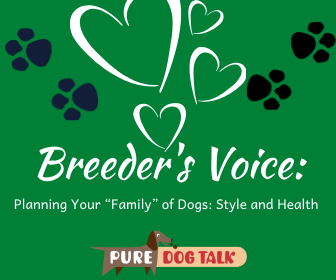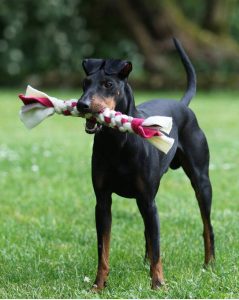397 — Planning Your “Family” of Dogs: Style and Health
Planning Your “Family” of Dogs: Style and Health
Our topic is breeding. With an emphasis on planning your family of dogs. The question: is consistency of style more important than consistency of health and/or quality? How do you get to your desired goals?
Today’s guests are Amanda Kelly, Wendy Paquette and Chris Heartz.
Wendy: “Coming from a background of Shih tzu, that were only recognized in United States in 1969, I didn’t have much choice when I first started my breeding program. Living in northern Ontario, the only way I could buy a female was to import two from England ’cause they were just not available. Luckily I came across Luc Boileau in Montreal who was showing English imported dogs at the time. So I was able to take my English import and breed it to one of Luc’s dogs. But that left me sort of in a quandary because I had nowhere else to go after that. So I basically started out breeding type to type.
“Consistency of type was a goal, but health and welfare, to me, is a major factor. If you don’t have health and welfare you don’t have quality and type either.”
337 – Black & Tan Dynamos: The Wash & Wear Manchester
Black & Tan Dynamos: The Wash & Wear Manchester
The Manchester Terrier has two varieties, Standard and Toy, both descended from the extinct black and tan terrier, according to a panel of experts at the American Manchester Terrier Club National Specialty.
The Manchester’s job was to hunt rats and other vermin in England and they retain the high prey drive today. Our experts encourage new owners to be sure their Manchester is on lead when outside a fenced area.
“You can have a good recall, but a squirrel will always take precedence,” said Marla Zoz.
Key Manchester Points:
- High drive, are food motivated but easily distracted.
- Very smart, pick up new skills quickly.
- Get very attached to their people. Suitable for a house or apartment.
- Need lots of physical activity.
- Require a lot of attention.
- Love being a part of the family.
- Need to spend time to develop well balanced companion.
- Low maintenance grooming… nails, clean teeth, wash and wear.
- Longevity – 15+ years.
- Health issues include cardiomyopathy and vWD, a bleeding disorder. When visiting with a potential breeder, be sure to ask if he/she is testing for these conditions with available DNA tests.
Standard Manchester Terriers are allowed to have naturally erect ears, button (shown here) or cropped. Toy Manchesters are only shown with naturally erect ears.
“You want to go, they’re ready at a moment’s notice. You want to cuddle on the couch, they’re right there,” said Jim Burrows.
These dogs are terriers, whether standard or toy sized, our panelists noted. They can “talk a lot.” Everyone agreed that the “four-footed burglar alarm” breed can be vocal. “They’re going to bark if they see something they don’t know,” Burrows said.
While generally aloof with strangers, the Manchester will warm up to new folks quickly. The breed needs a lot of socializing to develop a well-rounded dog, the breeders all agreed. Dog aggression, typical of many terriers, is manageable with appropriate socializing and training.



